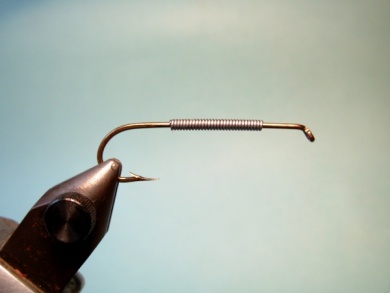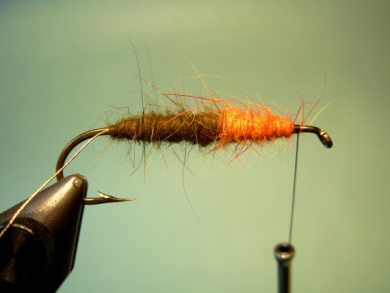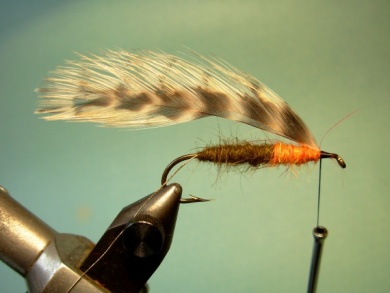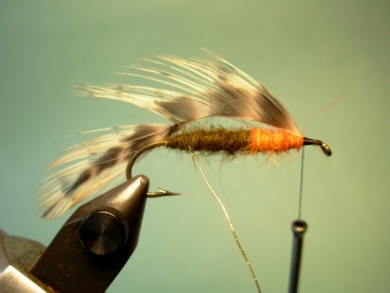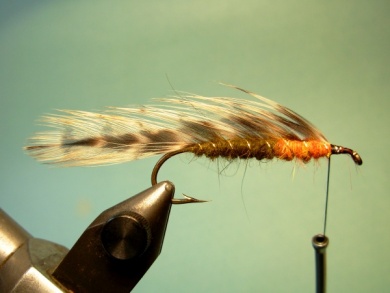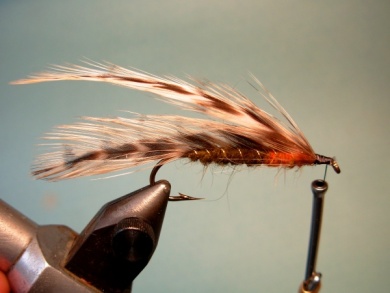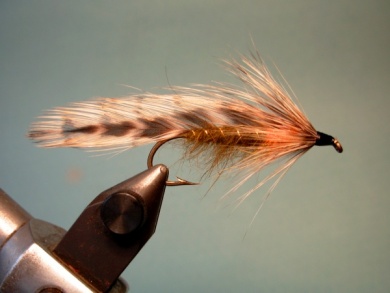Originally from New Zealand, the Matuka is still one of the most popular streamers in Patagonia. Not only used by fly fishermen that go after the big rainbows in november (early season) but also by those that chase the huge late season browns. Anglers who prefer to use light tackle tie these in very Ver más...Originally from New Zealand, the Matuka is still one of the most popular streamers in Patagonia. Not only used by fly fishermen that go after the big rainbows in november (early season) but also by those that chase the huge late season browns. Anglers who prefer to use light tackle tie these in very small sizes.It shares the same tying technique with another classic fly, the Rabbit (that uses a rabbit strip for the wing). The difference is that the Matuka gets its volume from one or two pairs of rooster or hen feathers.Hen feathers have a bit more web, so it is easy to give the fly more volume using only one pair of feathers. Rooster feathers tend to be sparser, so two pairs are usually needed to tie this fly and shape its body, which makes it a bit more complicated to tie. In either case, the real challenge for the fly tyer is to find two identical feathers (in both size and shape) to get the correct silhouette of the fly.Classic Matukas shown in catalogues have a chenille body, but to me the best body is made by using dubbing material in a spindle shape and combed. By doing so, the fly will be fluffier and with more volume. Short or long, skinny or fluffy, dark or bright, with dubbing or chenille, weighted or not… there are many ways to tie Matukas, but the fact is that this fly has been chosen by anglers to fish Patagonic waters with success for decades
Deslice el cursor sobre la imagen para visualizar la mosca con zoom.
Deslice el dedo sobre la imagen para hacer zoom.

Listado de materiales
MaterialsHook: TMC 5262, 300 or similar. Size #2 to #12.Weighing (optional): lead wire.Thread: 6/0, black.Body: Dubbing (combed).Ribbing: very fine tinsel oval, silver or gold.Wing: one or two pairs of hen or rooster feathers (As similar as possible).Collar: Rooster feather.
Pasos
Paso 1
Wrap the lead wire along the hook shank.
Paso 2
Tie a lower body in a spindle shape along the hook shank, securing the lead wire. Tie the tinsel oval over the lower body (this should not go further than the hook barb), and then place the dubbing material on the thread.
Paso 3
Shape the body of the fly with dubbing. Dubbing colours may be combined.
Paso 4
Remove the fibers from the lower part of the feathers. These should have the same length as the body of the fly, and should be tied next to the hook eye.
Paso 5
Place the feather fibers against the body.
Paso 6
Use the ribbing material to secure the feathers along the body of the fly.
Paso 7
Tie a feather to shape the collar.
Paso 8
Wrap the feather like a collar. Use the thread to shape the head of the fly, whip finish and cement.Comb the body.

